
Running a service company doesn't mean you need to sell it like a service. Some service companies leverage the power of product marketing to scale their business. Here’s how some of the best company's productize their services.
Custom services, like the work of most agencies, take time, and time is a finite resource. Productizing your services can help you grow your business efficiently. The truth is, service businesses are inherently difficult to scale.
Think about it: selling digital marketing or design services involves meeting with clients, learning about their business, crafting a strategy, and executing deliverables for them. This means you need to spend time upfront in the sales process evaluating leads and trying to determine how much time each project will take, which takes even more time.
By comparison, digital products are infinitely scalable:
-
You can sell the same product to ten people, or a million people.
-
Because your pricing and what it includes is stated upfront, you won’t need to spend as much time talking to leads and dealing with tire kickers. This helps minimize the time spent on the sales process.
-
You can promote a product using paid media, content marketing, webinars, SEO, and email without relying solely on word-of-mouth referrals. You can sell to the whole world, not just businesses in your locale. (and there are ways to do this to automate your sales and marketing).
You might be thinking, “That’s well and good, but I don’t have a product, I sell services.” But running a service company doesn't mean you need to sell like a service company.
Productized services can free you from manually tackling every aspect of your business. It allows you to automate more of your sales and marketing, allowing clients to become less dependent on individual touch-points within your agency and more reliant on your brand; your “product”.
How to productize a service
There are three basic productized service models you could adopt when looking to sell your services like a product:
-
Foot-in-the-door (FITD) offer
-
One-time purchases
-
Monthly subscription
1. Foot-in-the-door (FITD)
Ideal for: Freelancers and agencies that offer custom services or other high-priced products and want to use the foot-in-the-door offer to generate quality leads while still earning revenue.
How to productize: Think of how you can create a small, bite-sized version of your service and package it into a product that someone will pay for. It could be a video course, how-to guide, ebook, cheat-sheet, audit, or something else.
It needs to be high quality and naturally lead the buyer into purchasing your higher-priced offering. For example, a web design agency might offer a $250 website audit that they can generate fairly quickly, and after the audit is complete the buyer will be more naturally inclined to buy some of the agency’s higher-priced services.
Charging for the FITD offer can add legitimacy and perceived value to what you’re selling. The act of purchasing forms a buyer's mentality for your customer; you’ve trained them to buy from you once, thereby increasing the likelihood they’ll buy from you in the future.
The FITD model isn’t meant to be the thing that makes you money. Instead, it helps you generate leads and earn a bit of income while increasing the likelihood that someone who buys your FITD will end up purchasing your more expensive services.
Examples of FITD model
Jason Swenk
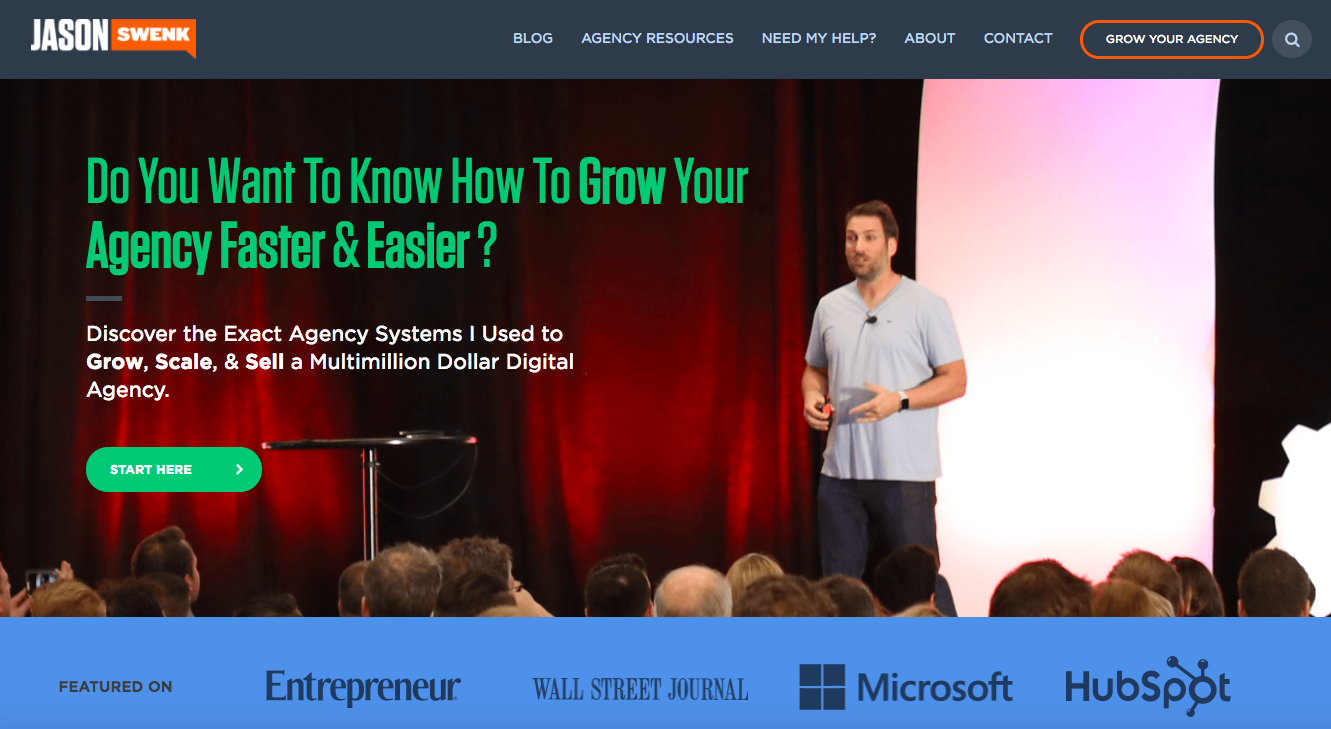
What he does: Jason Swenk ran a successful digital agency in the United States for over a decade. At its peak, he had over 100 employees and clients like AT&T, LegalZoom, and Hitachi. He sold the agency for profit and now helps other digital agency owners use his systems and strategies to make their agency more profitable. He sells courses, one-on-one coaching, and runs the Agency Mastermind group.
The FITD offer: Instead of just pushing people into the Mastermind group or selling coaching, Jason has a number of free and paid offers he uses to get leads, like his Agency University and Budget Buster. The offers vary in price, but all of them add value to an agency owner and allow Jason to demonstrate his knowledge and build trust.
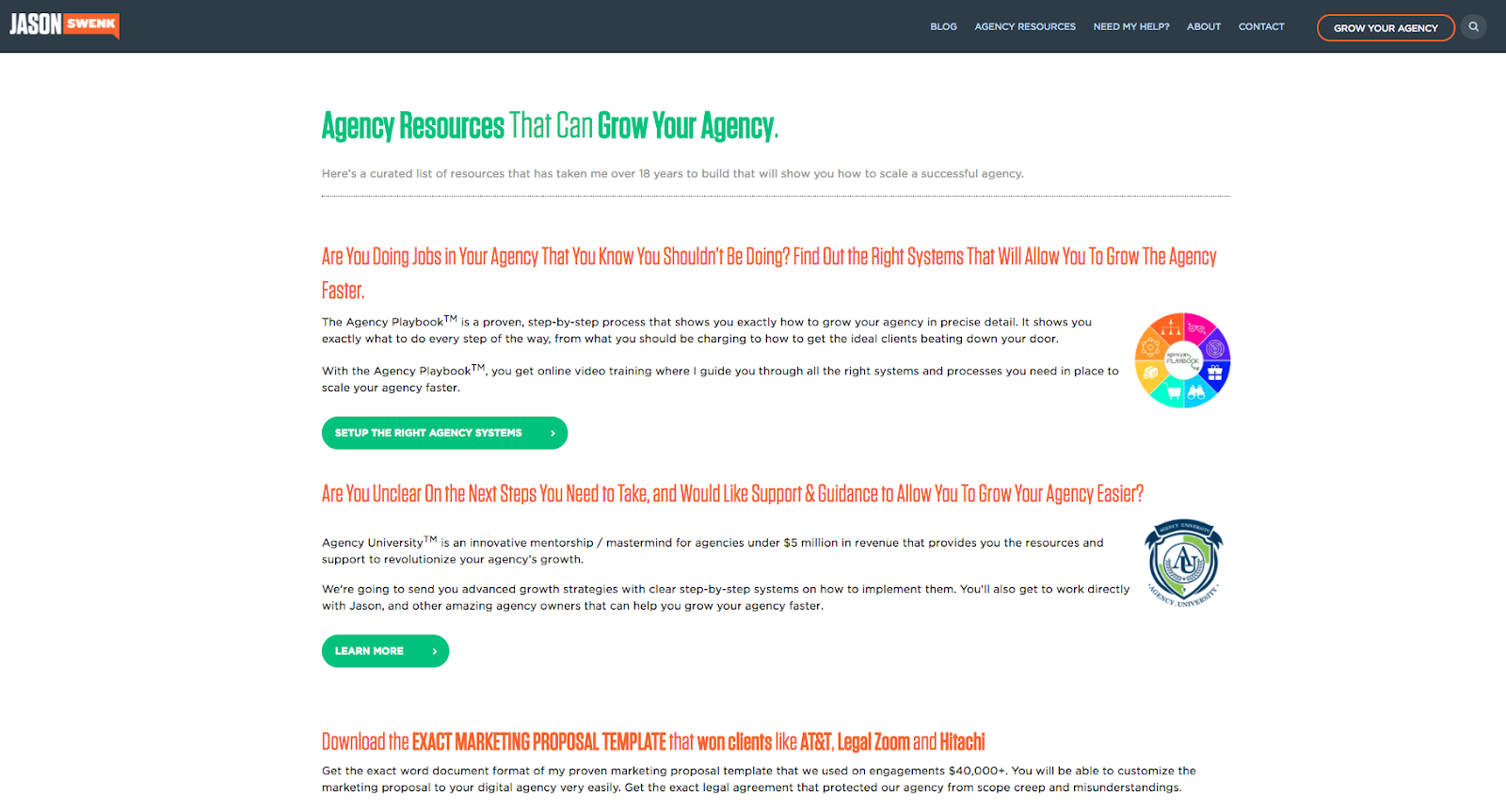
UI Breakfast
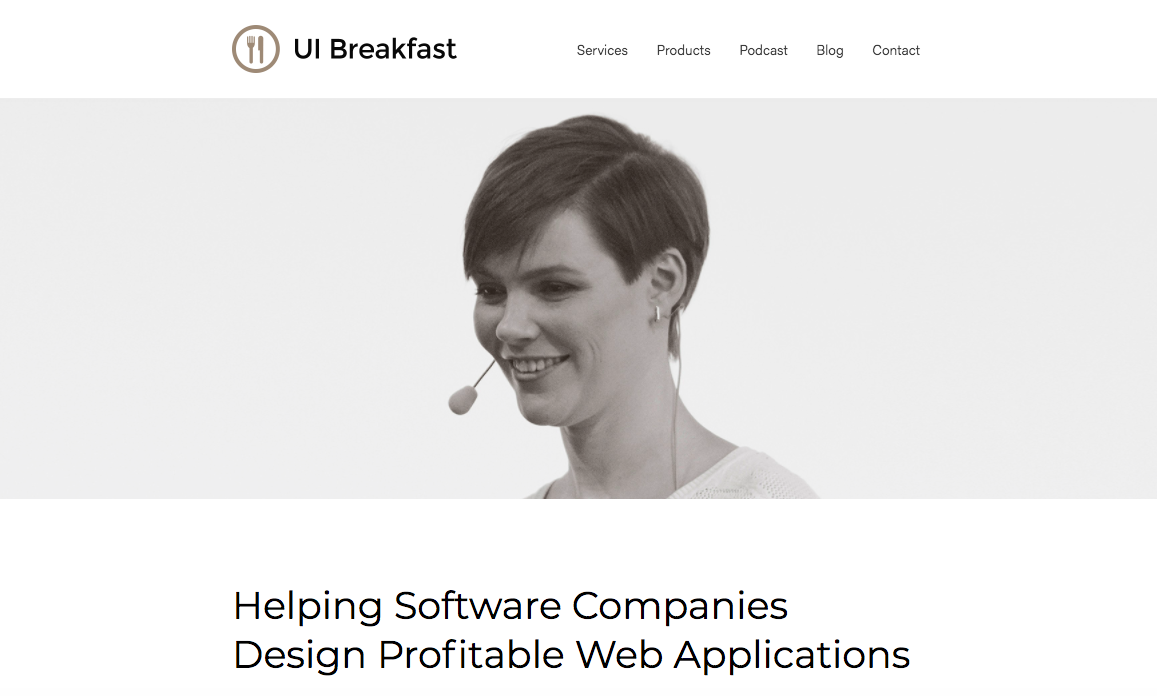
What she does: UI Breakfast, AKA Jane Portman, is a UI/UX consultant from Russia who helps software companies build focused, profitable products by designing their user interfaces.
The FITD offer: Unlike most freelancers and agencies who simply have “contact us” as a link in the nav, or “book a consultation”, Jane markets her services by prominently promoting three FITD offers.
-
UI Audit is an ebook she sells for $29. She also sells the advanced package, which includes the book, printable worksheets, and interviews for $59.
-
1-hour UI Audit is a free course that includes three training modules, each 20 minutes in length. This is such a smart way for her to demonstrate her expertise with potential clients.
-
The Productized Consulting Guide is a step-by-step guide that teaches her customers how to craft an irresistible offer, overcome typical client objections, write the perfect sales page, protect their business, and strategically plan their entire productized consulting line.

2. One-time purchases
Ideal for: Companies that build audits, websites, reports, strategies, or other self-contained services, and want to streamline the sales and marketing of their service. Like chimney sweeps or winter tires, these are things people only need once, or periodically throughout the year, not every month.
How to productize: Go back and look at all of your past client projects. Do a deep-dive to figure out what was common across all of them:
-
What was the standard scope size?
-
How long did it take you/your team to finish?
-
How much did you charge? Was it profitable?
It’s OK if there’s a wide variety; that means you need to split your pricing up into tiers.
For example, if most of your small projects are $5,000, took you 100 hours to complete, and included a certain set of deliverables, then package that up into a tier called ‘Small Business’ or something that shows this is the minimum engagement.
Then, look at your mid-tier projects that were higher priced. Did they include additional functionality or design revisions? How can you provide more value to larger clients?
Once you define a set of common packages, make sure to include an ‘Enterprise’ level package that goes above the highest tier. The great thing about this approach is that your common projects will be standardized, and you’ll spend more of that one-on-one custom scoping time only with clients who want to spend a lot more money with your agency.
Examples of one-time purchase model
Book In A Box
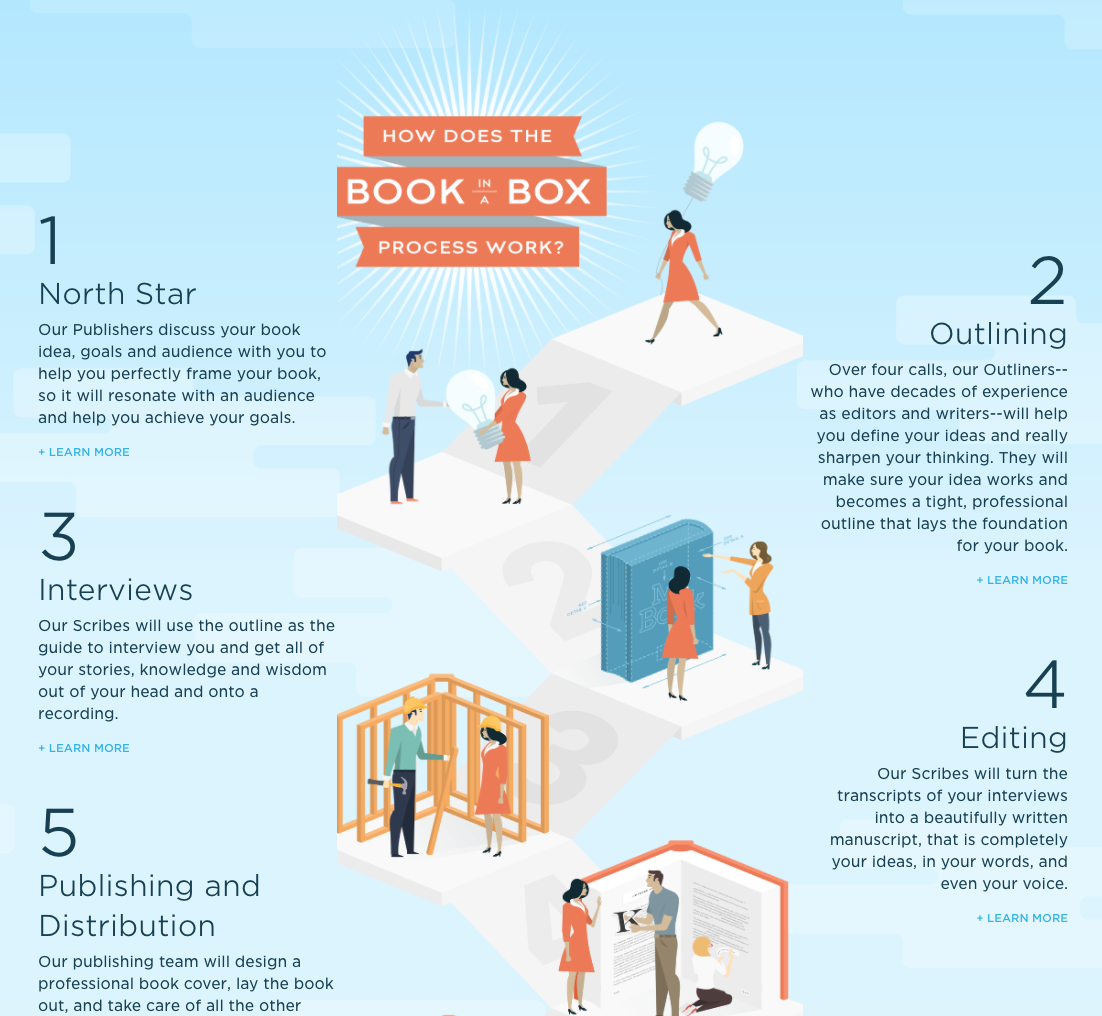
What they do: Anyone who has tried to write a book the traditional way knows it’s painful. I know because I’ve tried. Book In A Box solves that problem. One of the co-founders, Tucker Max, has written multiple New York Times best seller books; suffice it to say, they know the book business. Instead of just simply starting a ghostwriting service or consultancy, Book In A Box productized their offer into a repeatable process. Over the course of seven months, the author spends about 50 hours on the phone with BIAB, who helps them turn their thoughts and ideas into a book.
How it’s priced: BIAB is priced very simply: $25,000 USD spread out over five months ($5K/month). That price includes outline creation, interviews, transcription, revisions, copy editing, proofreading, cover design, layout, ebook conversion, ISBN registration, Amazon publishing, 50 printed copies, and a launch strategy. They also have optional add-ons, like research, additional images, audiobook, and hardcover options.
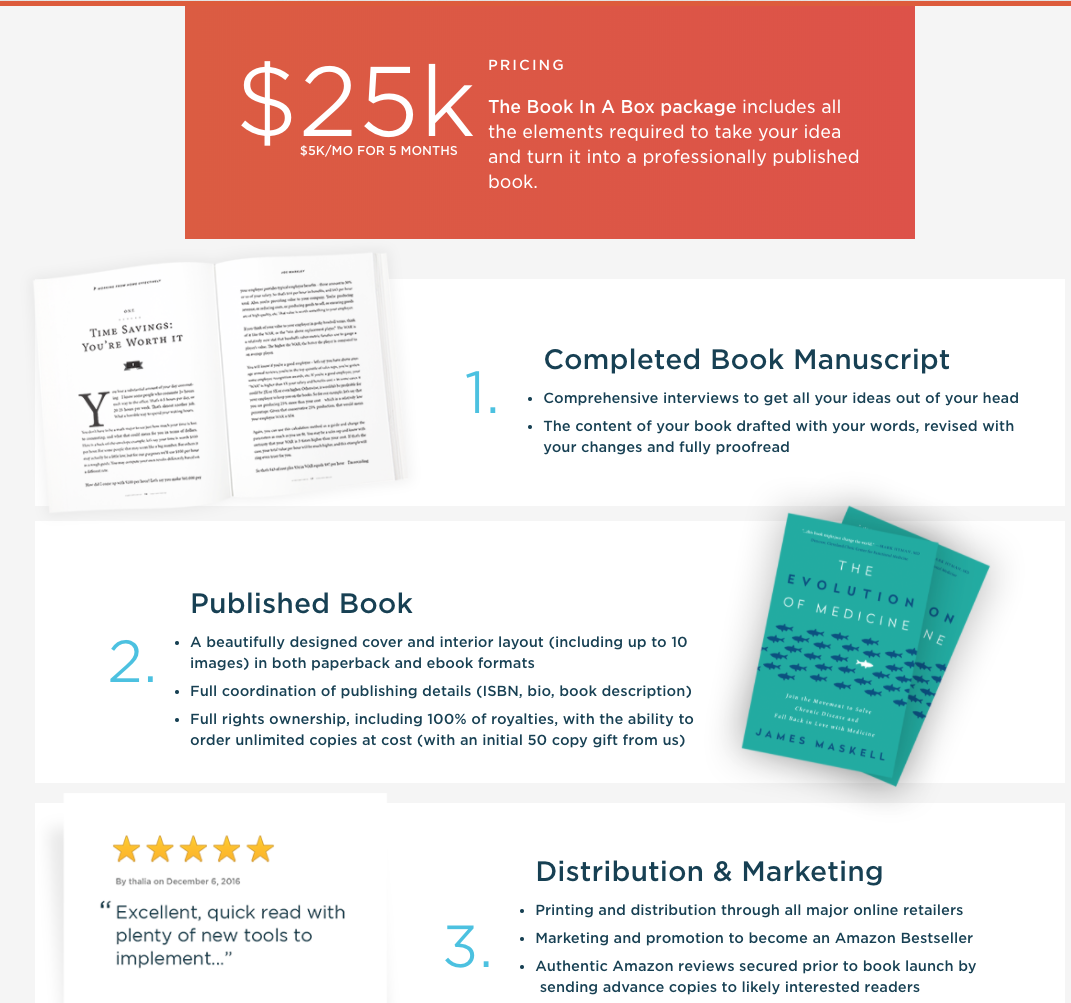
PSD 2 HTML
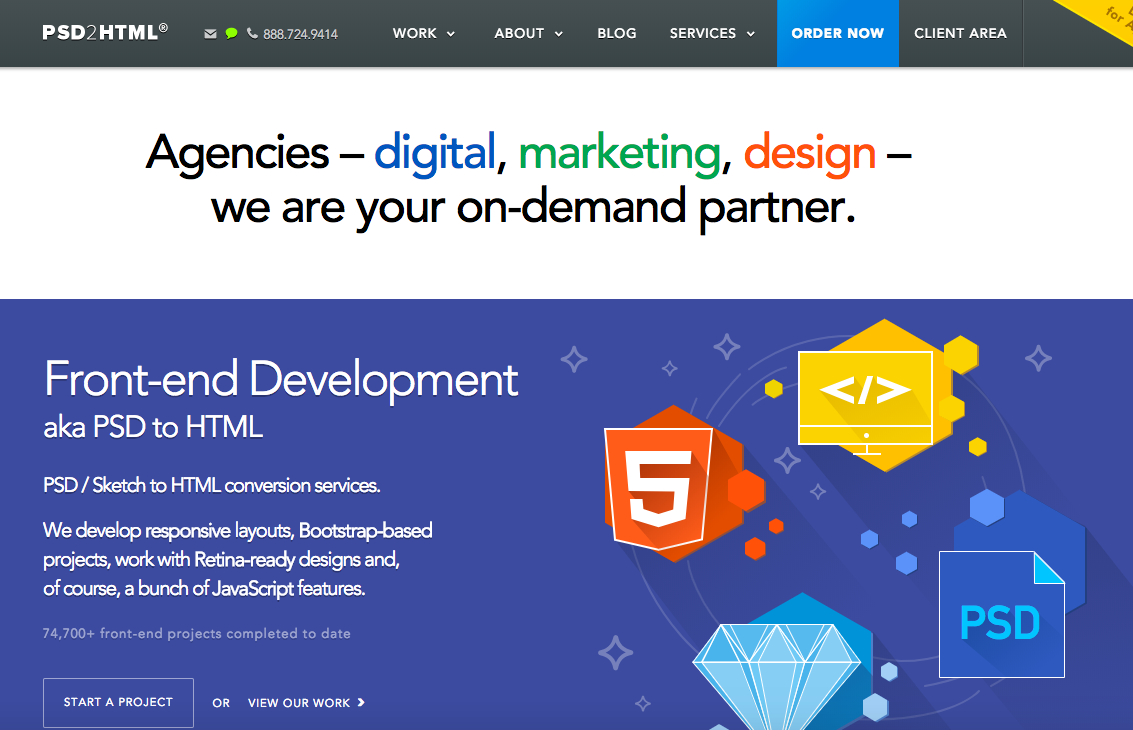
What they do: PSD 2 HTML takes your design, codes it in HTML, CSS and Javascript, and then converts it into one of several different CMS systems, like Wordpress, Joomla! or Drupal.
How it’s priced: They have an interactive pricing page that asks you to define your needs and then it generates a quote and timeline based on that information. After you submit your order, a person reviews it and gets back to you if there are any questions or out-of-scope requests.
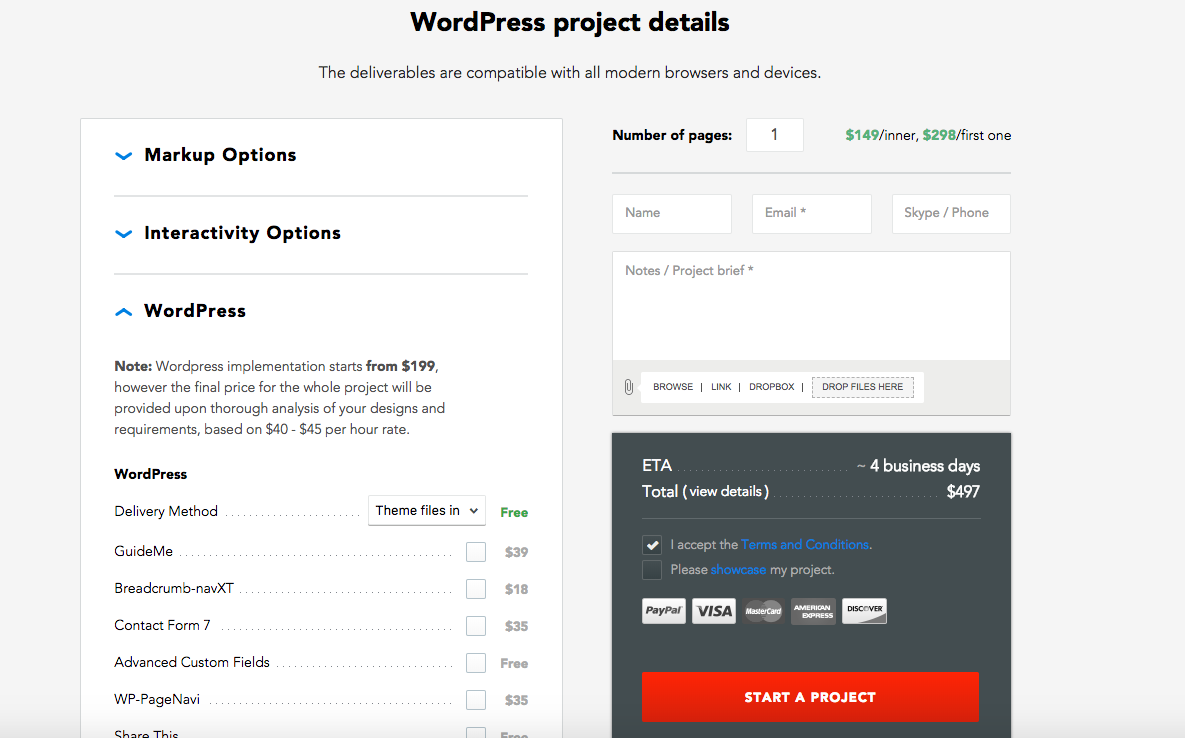
Data Stories
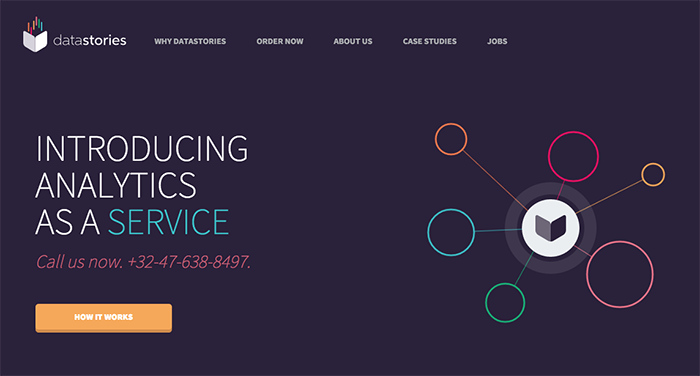
What they do: Businesses are drowning in data. It’s easier than ever to track everything a customer does, but harder to figure out how to take actionable steps to improve your business based on the data you collect. Data Stories helps you actually do something with your data.
You provide them with the spreadsheet or some other data source, and within a few days, they send you an interactive report that’s easy to understand.
How it’s priced: Data Stories provides three tiers based on various factors like your company size, how much data you have, how many KPIs you have, and so forth.
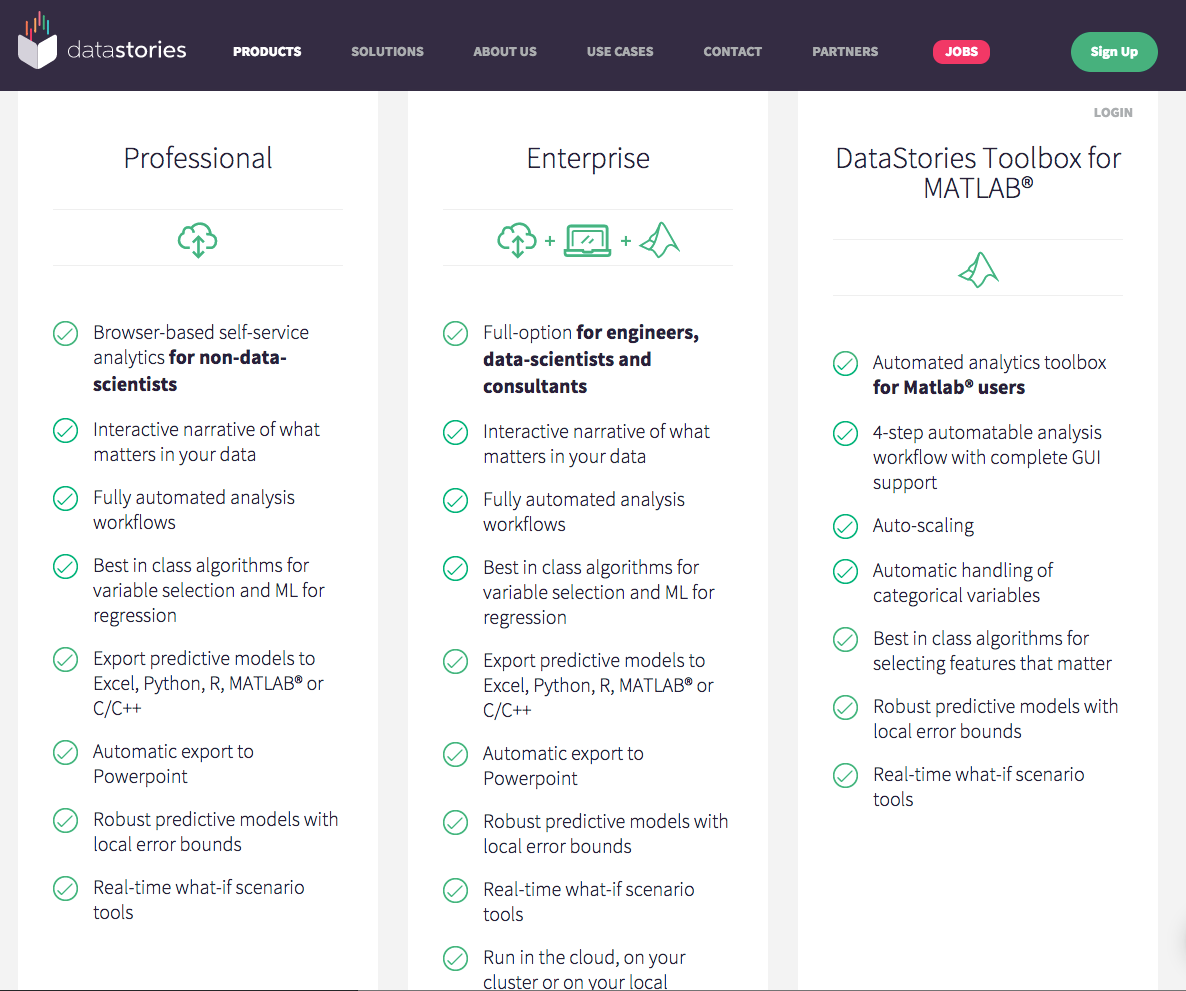
3. Monthly subscriptions
This model is the most similar to traditional SaaS pricing and is like a typical retainer-model. Instead of buying something once, you buy a monthly, quarterly, or annual subscription. This type of pricing is useful when a client can’t get value by only buying it once; they need to invest in it long term to achieve results.
Ideal for: Services that provide value over the long-term, not up-front. Examples would be blogging, SEO, social media management, content marketing, and email marketing.
In other words, if your client can’t get value from purchasing your service once and they need to commit to it regularly to drive results, then sell them a subscription.
Subscriptions help grow your business because they regulate your cash flow and allow you to predict your future revenue more accurately.
How to productize: If you already sell client retainers, subscriptions allow you to be more transparent about your retainers and fit them into standardized tiers.
Like one-off purchases, tiered approaches work best because they allow you to service your buyer personas in a way that makes sense to them. Go with your smallest engagements that offer the minimum amount of value and work up to your most common large retainers, where you provide more value and charge accordingly.
Then provide your ‘enterprise’ call-to-action for companies that need more than what your biggest plan offers.
Examples of monthly subscriptions model
Kudu
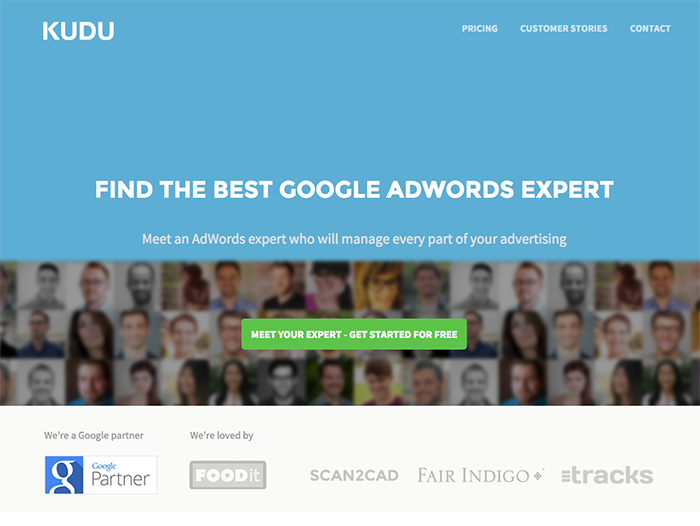
What they do: Technically anyone can run Adwords, but for those who have tried, we all know it’s a massive, time-consuming, pain in the arse. When you want to get serious about your Adwords, you need to hire an expert. Kudu matches you up with an expert, provides a plan, and manages your monthly spend.
How it’s priced: Kudu provides four tiers based on how much you’ve budgeted for Adwords. Their price goes up the more you spend because they need to spend more time managing it.
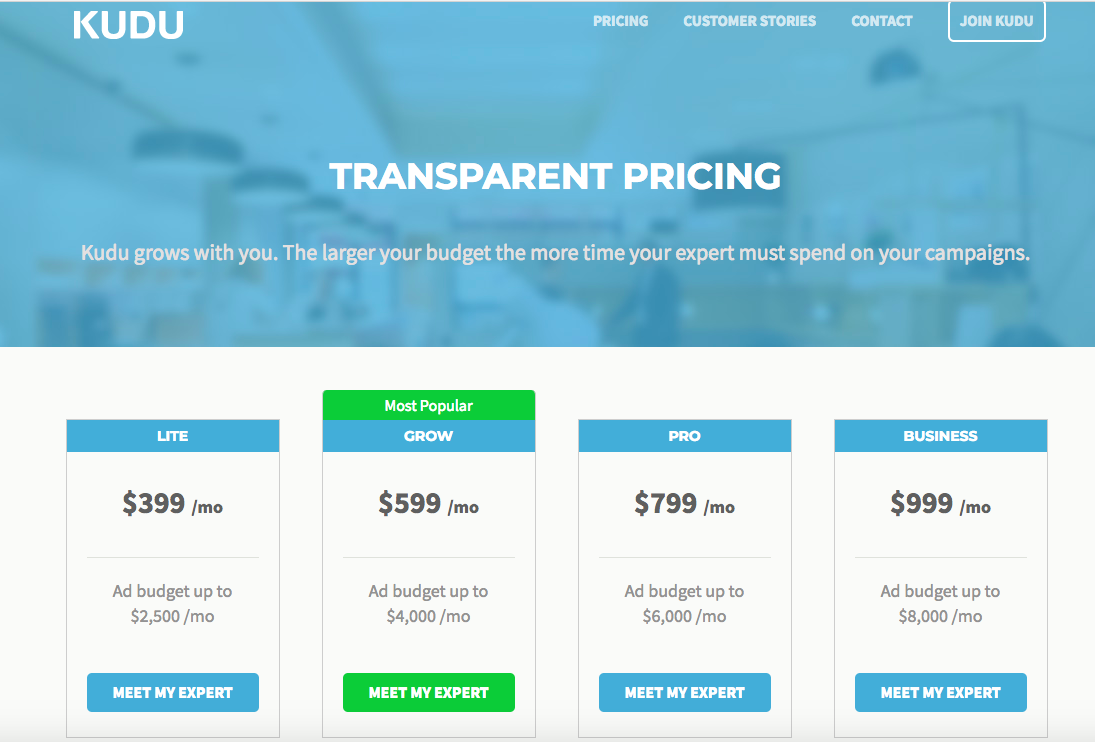
Bench
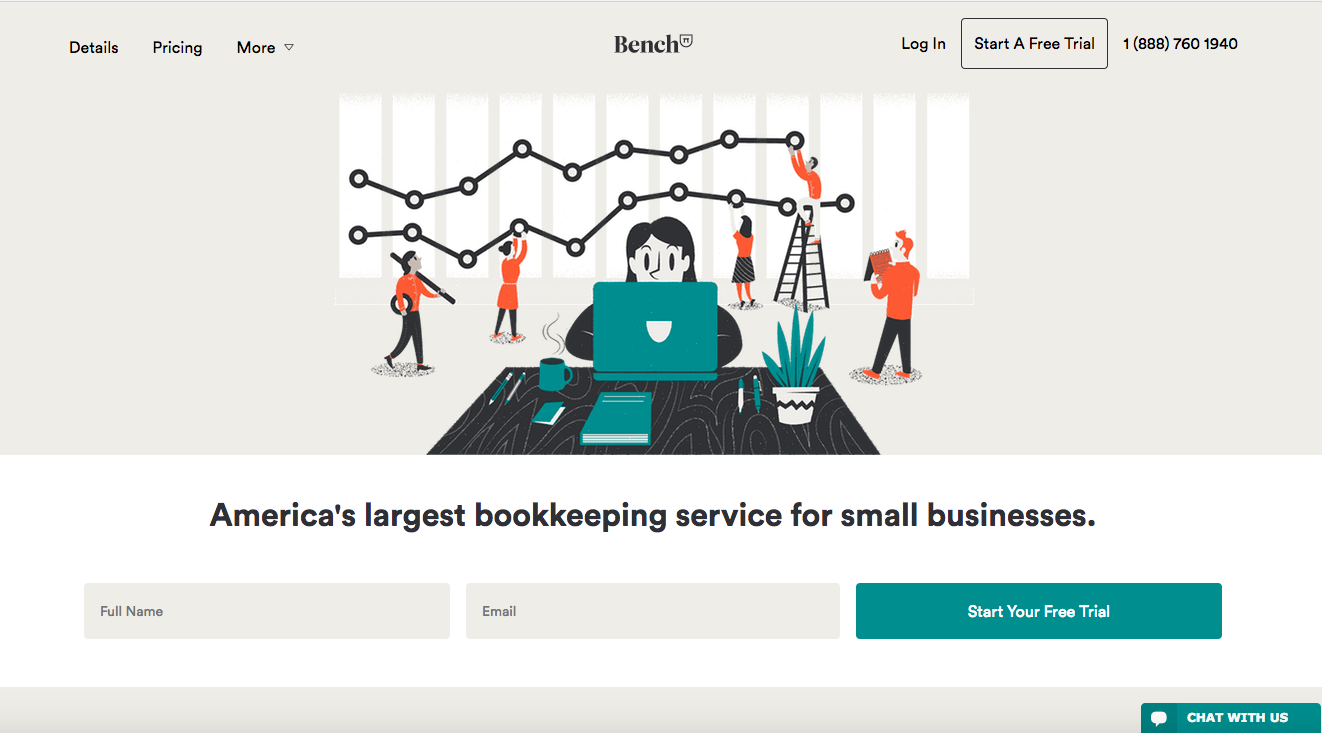
What they do: Bookkeeping sucks and none of us want to do it, right? Bench is a combination of software and human services. You upload your bank data into their software, and they provide income statements and balance sheets every month.
How it’s priced: Four tiers based on the number of bank accounts and custom add-ons. Add-ons include bank reconciliation, multiple revenue streams, and employee reimbursement.
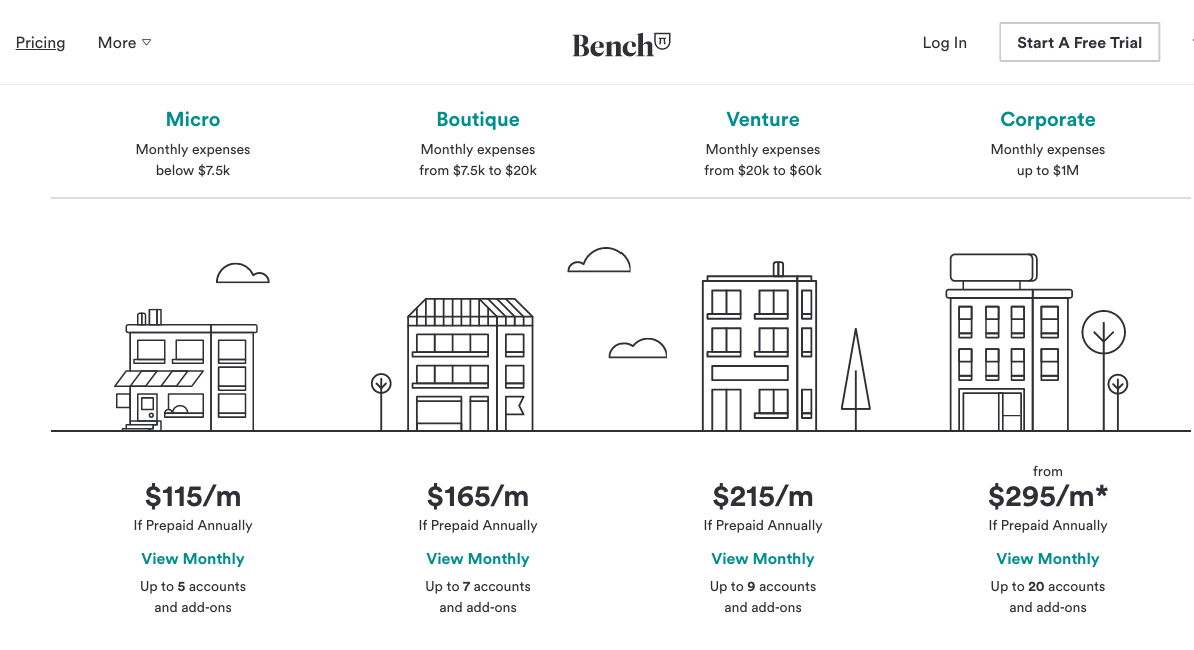
Automate and scale with productization
Though it’s not for everyone, productized services can free you from manually tackling every aspect of your business, and allows you to automate more of your sales and marketing.
It can also allow you to scale your business by adding new employees to fulfill client needs. Your clients will become less dependent on individuals on your team (like you) and more reliant on your brand and your “product”.

Co-founder and CEO of Proposify, and co-host of the Levership podcast. Outside of Proposify, he plays in the band Club Sunday, who put out their first LP in 2023 and enjoy playing live shows every chance they get. Follow him on LinkedIn.


